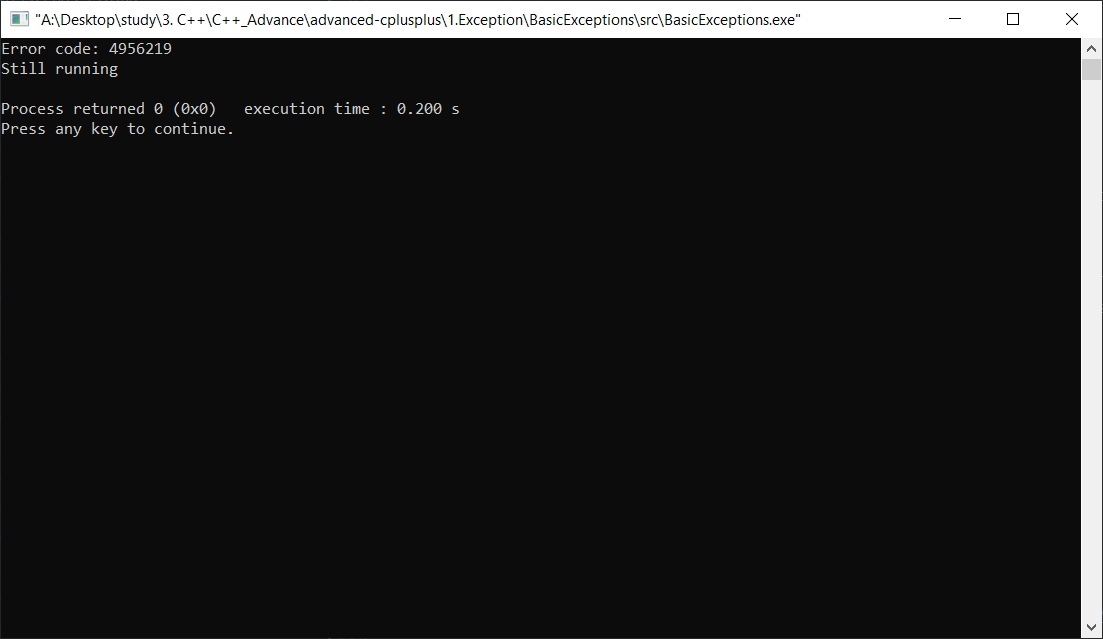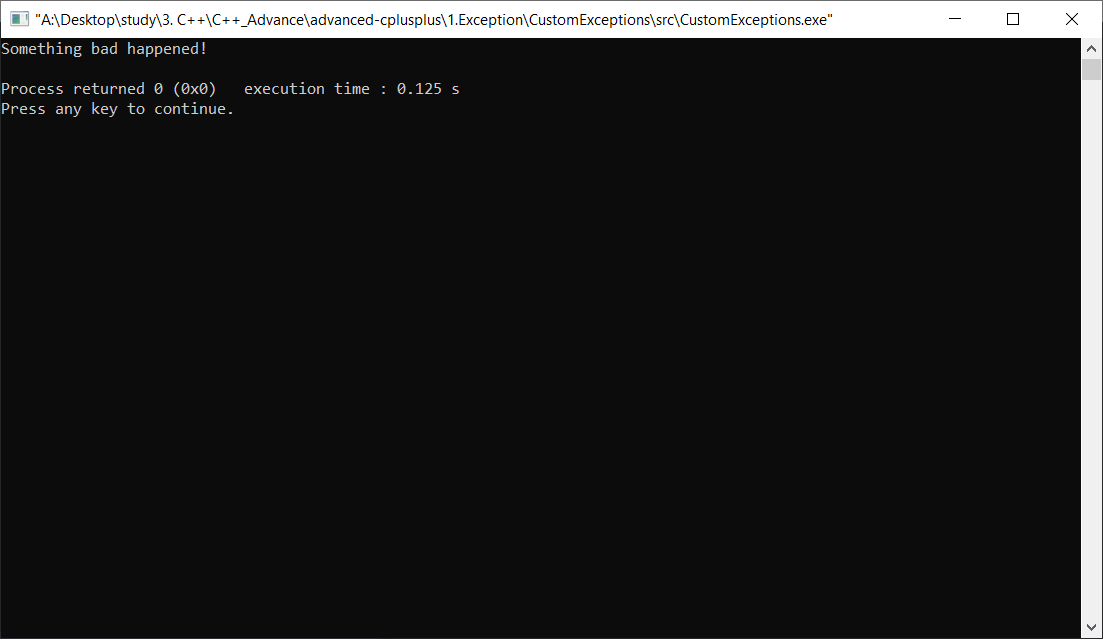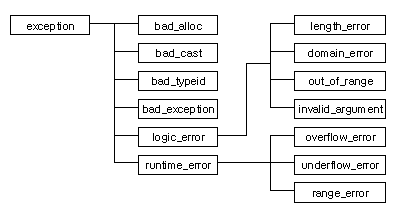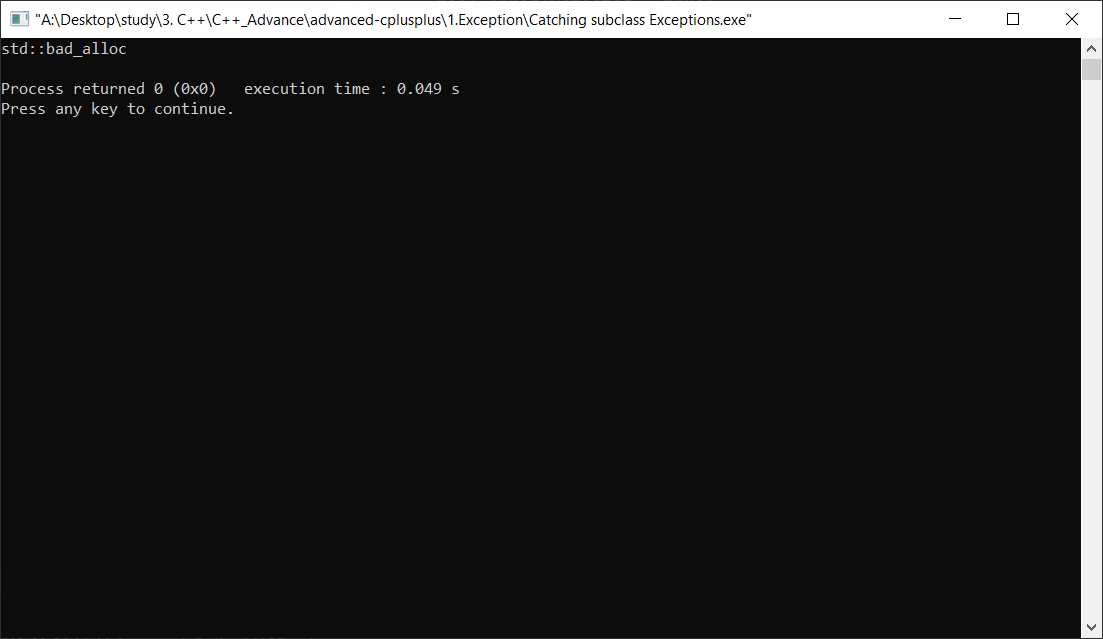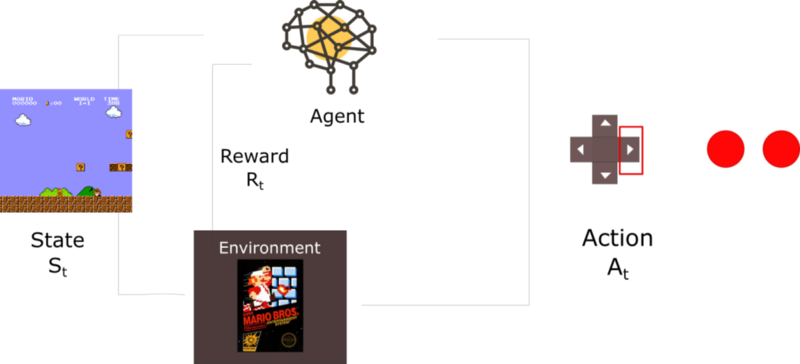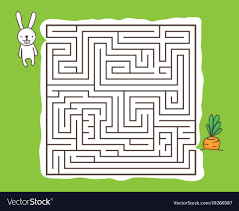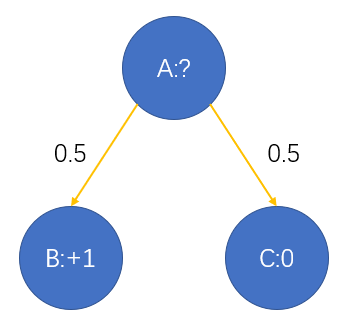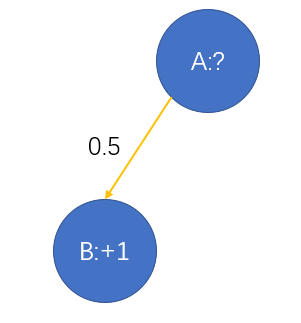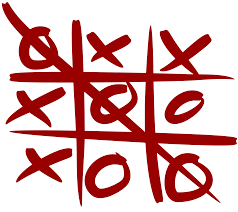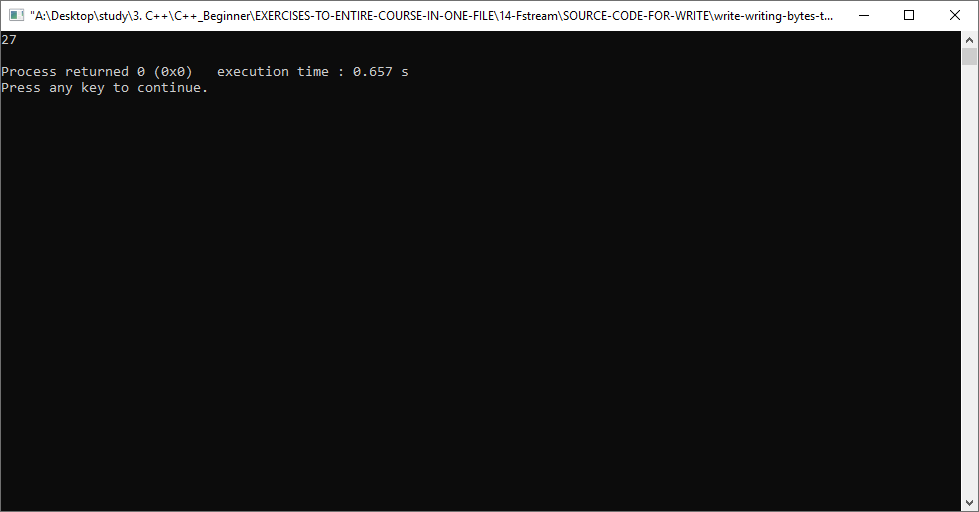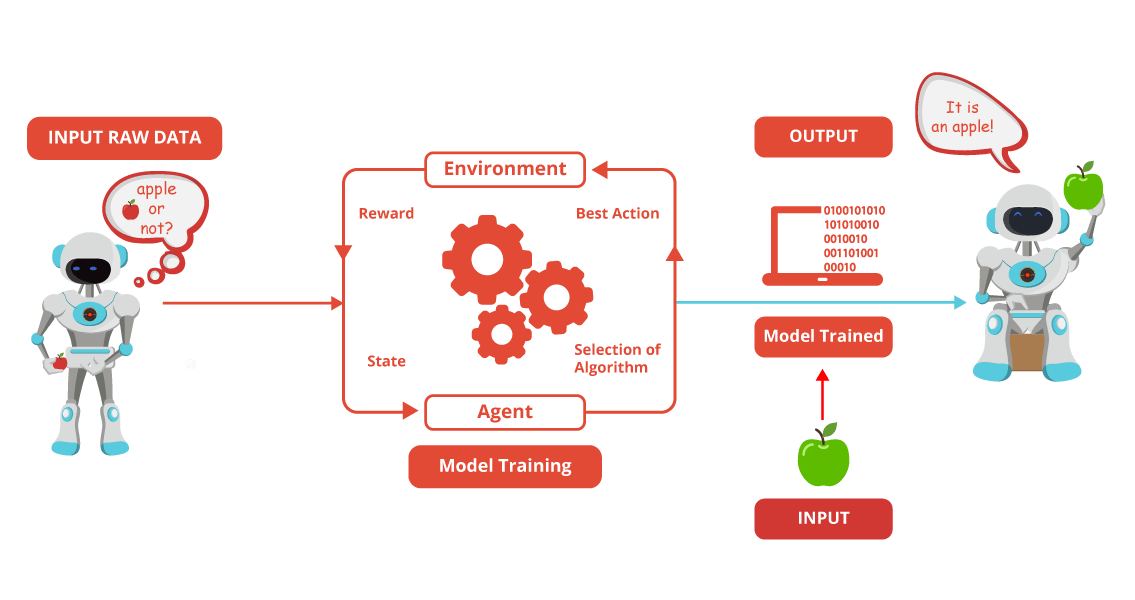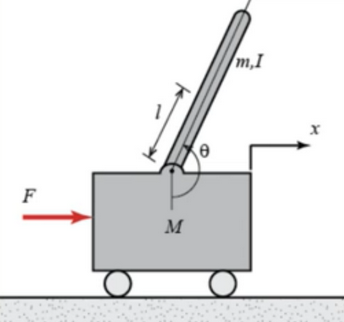25. Custom Exceptions
25 Sep 2019 | C++
Example 1 (Basic)
#include <iostream>
#include <string>
using namespace std;
void mightGoWrong() {
bool error1 = false;
bool error2 = true;
if(error1) {
throw "Something went wrong.";
}
if(error2) {
//throw string("Something else went wrong.");
throw int ("4");
}
}
void usesMightGoWrong() {
mightGoWrong();
}
int main() {
try {
usesMightGoWrong();
}
catch(int e) { // the throwing the value catched and apply to "int e"
cout << "Error code: " << e << endl;
}
catch(char const * e) { // character, so it save one by one alpabet in one matrix place
cout << "Error message: " << e << endl;
}
catch(string &e) { // c++ does not gracefully handle situation where there are two exceptions active at the same time in string.
//it imeediatley terminates the program without calling any destructor
cout << "string error message: " << e << endl;
}
cout << "Still running" << endl;
return 0;
}
Result
Example 2(Custom Exception)
#include <iostream>
#include <exception>
using namespace std;
class MyException: public exception {
//public exepction, is that inherit exception class
public:
virtual const char* what() const throw(){
//can not throw the exception.
//it is the optimize the way
//it halt the time.
return "Something bad happened!";
}
};
class Test {
public:
void goesWrong() {
throw MyException();
}
};
int main() {
Test test;
try {
test.goesWrong();
}
catch(MyException &e) {
cout << e.what() << endl;
}
return 0;
}
Result
Example 3(standard Exception)
- bad_alloic is hesitate to iostream of exception.h
#include <iostream>
using namespace std;
class CanGoWrong {
public:
CanGoWrong() {
char *pMemory = new char[91231312312312999999999999999]; // this is the memory to handle
// new char[999] number of bite
delete[] pMemory;
}
};
int main() {
try {
CanGoWrong wrong;
}
catch(bad_alloc &e) {
//bad_alloc is the catching up the error
//bad_alloc is name of class is to pick a convetnion and stick to it
cout << "Caught exception: " << e.what() << endl;
}
cout << "Still running" << endl;
return 0;
}
Example 4(Catching subclass Execptions)
#include <iostream>
#include <exception>
using namespace std;
void goeswrong (){
bool error1Detected = true;
bool error2Detected = false;
if(error1Detected){
throw bad_alloc();
}
if(error2Detected){
throw exception();
}
}
int main(){
try{
goeswrong();
}
catch(exception &e){
cout<<e.what()<<endl;
// what is the state of ".e"
// like saying yeah that is std::exception.
}
catch(bad_alloc &e){
cout<<e.what()<<endl;
}
return 0;
}
Example 1 (Basic)
#include <iostream>
#include <string>
using namespace std;
void mightGoWrong() {
bool error1 = false;
bool error2 = true;
if(error1) {
throw "Something went wrong.";
}
if(error2) {
//throw string("Something else went wrong.");
throw int ("4");
}
}
void usesMightGoWrong() {
mightGoWrong();
}
int main() {
try {
usesMightGoWrong();
}
catch(int e) { // the throwing the value catched and apply to "int e"
cout << "Error code: " << e << endl;
}
catch(char const * e) { // character, so it save one by one alpabet in one matrix place
cout << "Error message: " << e << endl;
}
catch(string &e) { // c++ does not gracefully handle situation where there are two exceptions active at the same time in string.
//it imeediatley terminates the program without calling any destructor
cout << "string error message: " << e << endl;
}
cout << "Still running" << endl;
return 0;
}
Result
Example 2(Custom Exception)
#include <iostream>
#include <exception>
using namespace std;
class MyException: public exception {
//public exepction, is that inherit exception class
public:
virtual const char* what() const throw(){
//can not throw the exception.
//it is the optimize the way
//it halt the time.
return "Something bad happened!";
}
};
class Test {
public:
void goesWrong() {
throw MyException();
}
};
int main() {
Test test;
try {
test.goesWrong();
}
catch(MyException &e) {
cout << e.what() << endl;
}
return 0;
}
Result
Example 3(standard Exception)
- bad_alloic is hesitate to iostream of exception.h
#include <iostream>
using namespace std;
class CanGoWrong {
public:
CanGoWrong() {
char *pMemory = new char[91231312312312999999999999999]; // this is the memory to handle
// new char[999] number of bite
delete[] pMemory;
}
};
int main() {
try {
CanGoWrong wrong;
}
catch(bad_alloc &e) {
//bad_alloc is the catching up the error
//bad_alloc is name of class is to pick a convetnion and stick to it
cout << "Caught exception: " << e.what() << endl;
}
cout << "Still running" << endl;
return 0;
}
Example 4(Catching subclass Execptions)
#include <iostream>
#include <exception>
using namespace std;
void goeswrong (){
bool error1Detected = true;
bool error2Detected = false;
if(error1Detected){
throw bad_alloc();
}
if(error2Detected){
throw exception();
}
}
int main(){
try{
goeswrong();
}
catch(exception &e){
cout<<e.what()<<endl;
// what is the state of ".e"
// like saying yeah that is std::exception.
}
catch(bad_alloc &e){
cout<<e.what()<<endl;
}
return 0;
}

